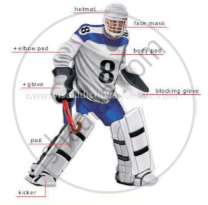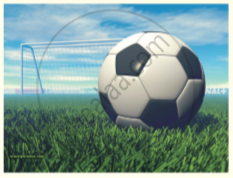Advertisements
Advertisements
Question
Multiple Choice Question:
The members of a family ______
Options
live together
talk to each other
share everything
work together
Solution
The members of a family share everything.
APPEARS IN
RELATED QUESTIONS
Thinking about the Text
Discuss in pairs and answer question below in a short paragraph (30 − 40 words).
How many characters are there in the narrative? Name them. (Don’t forget the dog!).
“A slumber did my spirit seal,” says the poet. That is, a deep sleep ‘closed off’ his soul (or mind). How does the poet react to his loved one’s death? Does he feel bitter grief? Or does he feel a great peace?
This poem describes the journey of a stream from its place of origin to the river that it joins. The poem has been written in the form of an autobiography where the brook relates its experiences as it flows towards the river. In Literature such a device by which an inanimate object is made to appear as a living creature is called Personification. Just as the brook has been personified in this poem, write a poem on any inanimate object making it come alive. You could begin with a poem of 6-8 lines. The poem should have a message. Maintain a rhyme scheme. Try and include similes, metaphors, alliteration etc. to enhance the beauty of the poem. You could write a poem on objects such as the candle/a tree/a rock/the desert etc.
This could be given as a homework activity. The teacher could read out some of the poems in the class and display the others.
Form pairs - one student will read the text for 'Hockey', and the second student will read the text for 'Football'.
Hockey

The game starts when the umpire blows his whistle for the opening pass-back. The passback is made at the centre of the field to start the game (also after half- time and after each goal is scored). The ball, which may be pushed or hit, must not be directed over the centre line. All players of the opposing team must stand at least 5 yard from the ball and all players of both teams, other than the player making the pass-back must be in their own half of the field.
There are two umpires to control the game and to administer the rules. These umpires are the sole judges of the game. The umpires are responsible for keeping time for the duration of the game.


In front of each goal is an area known as the penalty area. This is a rectangular area, 40.2m wide and extending 16. Sm into the field where the goalkeeper operates.
A standard adult football match consists of two periods of 45 minutes each, known as halves. Each half runs continuously, meaning that the clock is not stopped when the ball is out of play. There is usually a 15-minute half-time break between halves. The end of the match is known as full-time. Anytime during the match, a team can substitute upto three players maximum.
The game is controlled by a referee who is the official timekeeper for the match, and may make an allowance for time lost through substitutions, injured players requiring attention, or other stoppages. There are also two linesmen who keep guard of the touchlines or sidelines, signalling when the ball crosses the boundary lines. The referee alone signals the end of the match.
Handling the ball deliberately, pushing or tripping an opponent, or hitting a player from behind are examples of fouls, punishable by a direct free kick or penalty kick depending on where the offence occurred. Other fouls are punishable by an indirect free kick.
The referee may punish a player's or substitute's misconduct by a caution (yellow card) or sending-off (red card). A player is given a yellow card is said to have been 'booked'.
• Red - Serious misconduct resulting in ejection from the game. If a player has been sent off, no substitute can be brought in his place.
Beside him in the shoals as he lay waiting glimmered a blue gem. It was not a gem, though: it was sand—?worn glass that had been rolling about in the river for a long time. By chance, it was perforated right through—the neck of a bottle perhaps?—a blue bead. In the shrill noisy village above the ford, out of a mud house the same colour as the ground came a little girl, a thin starveling child dressed in an earth—?coloured rag. She had torn the rag in two to make skirt and sari. Sibia was eating the last of her meal, chupatti wrapped round a smear of green chilli and rancid butter; and she divided this also, to make
it seem more, and bit it, showing straight white teeth. With her ebony hair and great eyes, and her skin of oiled brown cream, she was a happy immature child—?woman about twelve years old. Bare foot, of course, and often goosey—?cold on a winter morning, and born to toil. In all her life, she had never owned anything but a rag. She had never owned even one anna—not a pice.
Why does the writer mention the blue bead at the same time that the crocodile is introduced?
Ans. The author mentions the blue bead at the same time that the crocodile is introduced to create suspense and a foreshadowing of the events’to happen.
Read the extract given below and answer the question that follow.
What was Sibia’s life like?
Match items in List A with their meanings in List B.
Use any three of the above words in sentences of your own. You may change the form of the word
A B
wounded got up from sleep
awoke give back
forgive small patches of ground for plants
faithful severely injured
pity pardon
beds loyal
return feel sorry for
What is the secret that Meena shares with Mridu in the backyard?
Why was the new governor called to the palace?
Why did Vijay Singh ask the ghost disguised as Natwar to come closer?
“But mother says that kind is good…” What is mother referring to?
Why did the little man’s face wrinkle and frown?
With your partner, complete the following sentence in your own word using the ideas in the poem.
English is a __________________ with words that everyone can play.
Multiple Choice Question:
When do strange questions strike the poet?
The words given against the sentences below can be used both as nouns and verbs. Use them appropriately to fill in the blanks.
(i) She has a lovely ____________. (face)
(ii) India ____________ a number of problems these days.
How did uncle explain the ‘game of chance’?
Give a synonym for ‘like’ in the context of the poem.
Choose a befitting adjective to describe the nature of squirrel.
What did the speaker’s brother say about the Shed?
Play detectives with each other. Find a person in your class (or some other acquaintance) to speak to. Find out the answers to the questions given below. Be careful to ask your questions in a polite and inoffensive way. Do not force the person to answer you. Then allow the person to ask you the same questions.
- Name?
- What newspapers or magazines does the person read?
- How long has the person lived at the current address?
- What does she/he do during the day, i.e. the daily routine?
- What do neighbours and friends say about the person?
- Who are his/her visitors and what are his/her eating habits? (You can ask a few others about this.)
- What do you think about the person?
Which of the given options contains the figure of speech that appears in the following line from Leigh Hunt's poem “The Glove and the Lions’: ‘Ramped and roared the lions’:
